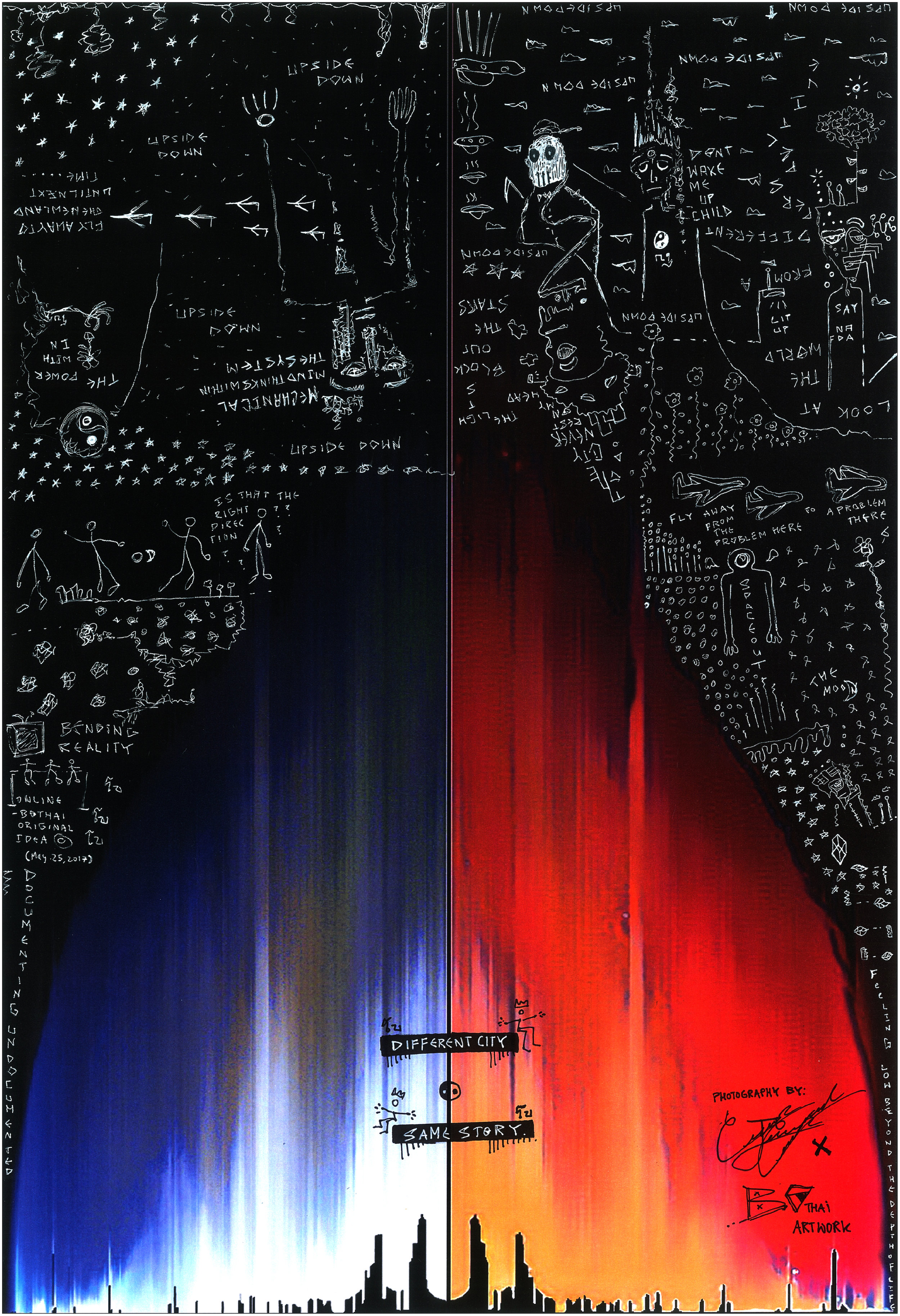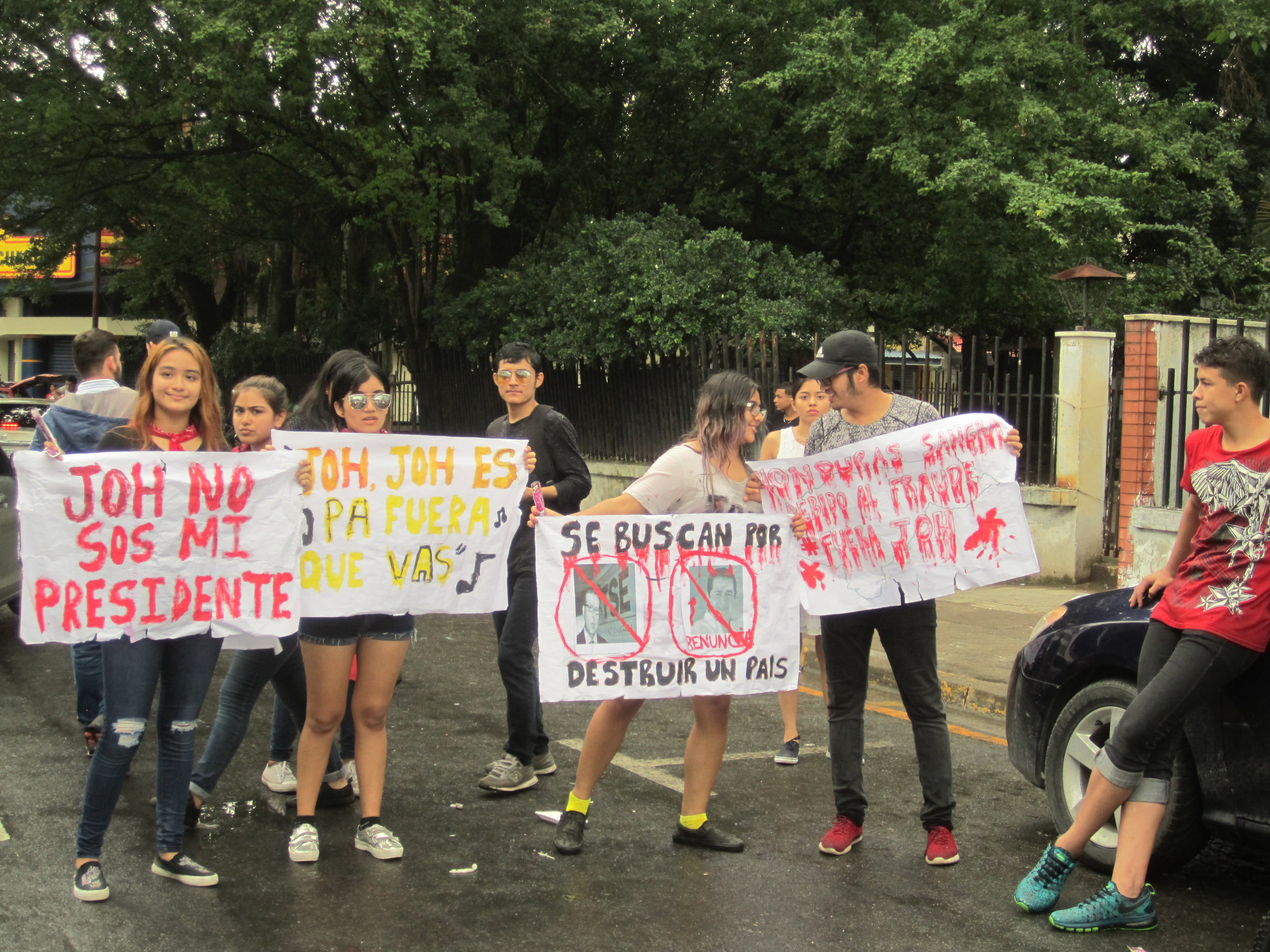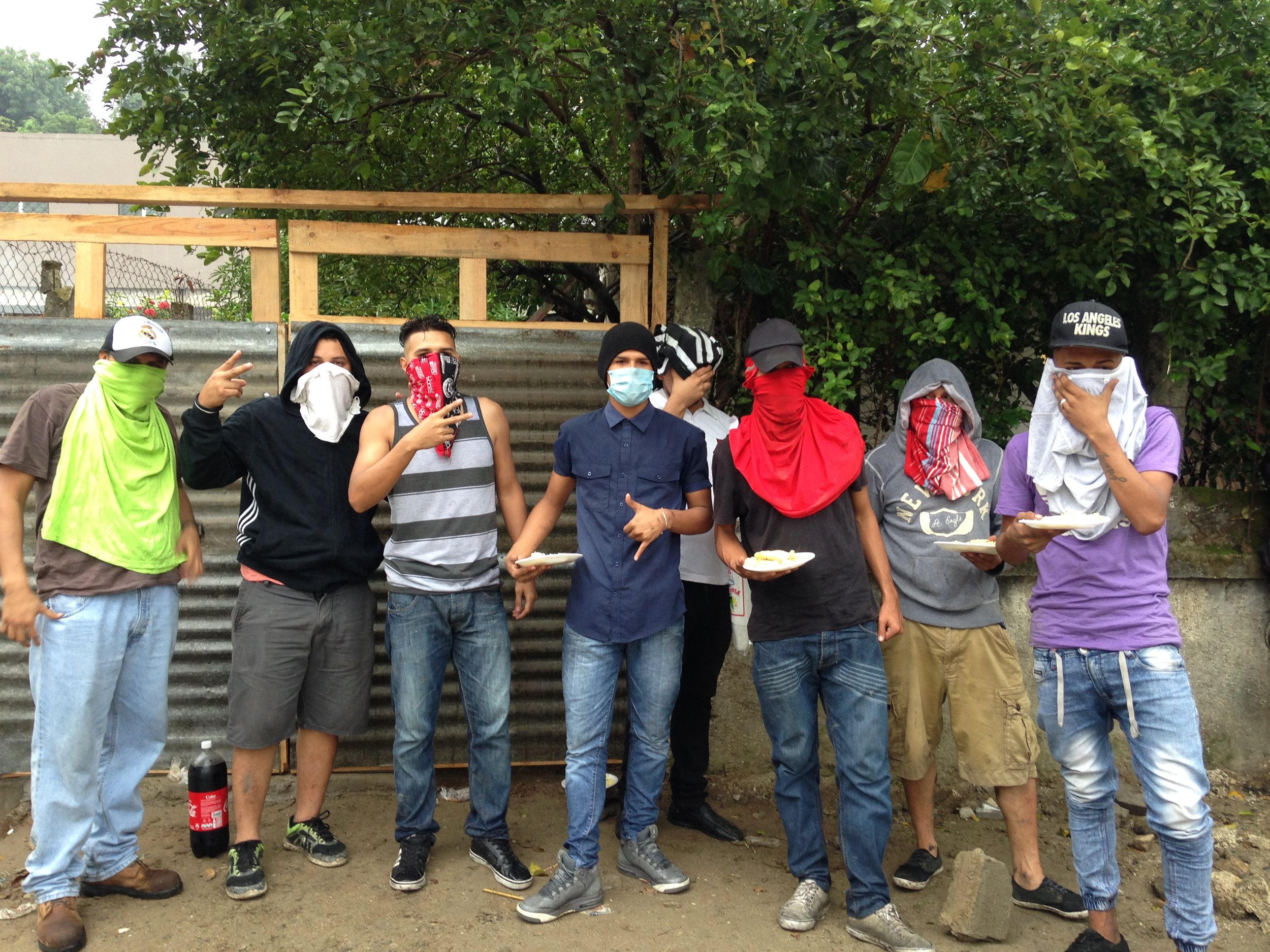One week later I’m standing in Golden Dreams. It is a small town close to the Guatemalan border. According to official statistics, its population is about 300. It is a forgotten little town at the edge of the border. There is nothing in this place except it is part of the trail migrants take.
After waiting for three hours, I think that Black isn’t going to arrive. Then he appears, seated on the back of a motorbike with one of the kids who gather on the edge of the highway. This is where I get to know Black, and where I begin to understand a part of the world where adolescents fleeing the violence in Honduras live.
Since he was 11 years old, Black has seen dead bodies. His neighborhood, one of the poorest, is considered one of the “hottest” in San Pedro Sula. He describes days of “slaughter” that have not ended yet. People are terrified to leave their home because they are surrounded by death. In a single day, there could be “one dead body on the corner, another in front, just up from the store, on the other street, and so people live in the midst of dead bodies.” At first, Black asked about so many murders, but he quickly learned that it was better not to ask. Cadavers formed part of his daily life. That’s how he started to ignore death and to live with the end of life every day. Later, he became a member of theMS-13 (Mara Salvatrucha). He describes his history casually. For Black, to be a marero is not that different from seeing dead bodies from the sidelines. Becoming a marero is part of the same situation: poverty, inequality, anti-gang operations, death squads, and unstoppable migration of youth. It is simultaneously overwhelming and banal.
By becoming a gang member, subject to torture and disappearance by the police or the military, he became no one to the Honduran state. But if we are frank, Black, who never told me his real name, was never really anyone to the Honduran government. People like him are no one to us. Dismissing him as a gang member allows us and the government to rationalize that he deserves the worst kind of death. It allows us to sleep calmly at night. Let’s not deceive ourselves. Now he is someone, but someone who deserves to die at the hands of whoever, wherever. It doesn’t matter.
Black “had to distance himself” from the gang and was thereby banished him from his country. He had to flee, so he crossed through Guatemala and went north. He started working in Monterrey at odd jobs to earn a few pennies, party, eat, and occasionally return, dressed as a girl for safety, to Honduras for a few days. His life was this route—back and forth to the north and to the south. The doors closed in every country. He could not stay in Honduras; the government there would not protect him. To Mexico, he was a headache. The United States wasn’t even a consideration. So he risked his life and kept moving. He sold a little bit of weed to travel to Monterrey – and once there, he smoked the rest himself.
He knew people along the whole route, the majority of whom were young guys like him – some Mexican, others Hondurans, Guatemalans, Salvadorans. Many of them panhandled along the train tracks or in the streets of the passing towns. Black didn’t like to beg, so he didn’t panhandle. The boy with the beady eyes knew life along the train tracks, starting in Tenosique. He knew how young men like him survived.
We saw each other a few times in this town and talked in the oppressive heat. “Here, there are rules,” he said. He told me that those who more or less control what happens along the rails are those with food stands, or those who rent rooms to Central Americans. There’s Don Pepe, a Honduran of about 40-50years old who has a Cuban accent because he lived for many years in Miami. He always looks out from his stand at those who arrive. Above all, the women. He sizes up new arrivals and doesn’t let them start fights near his place. Don Pepe’s catch phrase is “Here, we are going to behave ourselves.” He offers rooms for rent and sells Honduran food. He doesn’t hesitate to take out a stick and break it over the head of anyone who bothers his clientele or who causes disturbances. He also doesn’t hesitate to call immigration.
In front of the station, Don Goyo rents dirty rooms and sells fruits, vegetables, beer and probably drugs to nationals and foreigners alike. Who knows who he’s affiliated with, but things have gone well for Don Goyo. He has a son who is an astute scoundrel. His son is Don Goyo’s eyes and ears on the streets. Together, they ensure new arrivals don’t cause any problems, at least not near their business. Black says Don Goyo and Don Pepe know all of the groups that assault, rape, and kill; that’s business in these parts. They let the youth panhandle and walk around there, but they don’t like homeless people from any country and they don’t want trouble.
The boy with the penetrating stare knew many boys in this place. You start to recognize the young guys who are always walking through. One time I asked him how else they made a living, besides panhandling. “You’ll see,” he told me.
Before he disappeared, Black introduced me to Wilson. The first day I met Wilson, he walked up to us and Black immediately began heckling him, shaking with laughter and calling, “Hey you, and how’s Don Simón? Ha ha.” It was clear that Black was making fun of him. Wilson laughed, but he looked away with shame. Wilson’s right eyelid almost always covered half of his eye. It seemed like he was high but that was just his facial structure.
“Wilson goes to an old jerk’s house who lives along the train tracks,”said Black. “Don Simón likes the young ones like Wilson.”
This Don Simón operates like this: The boys go by panhandling and then Don Simón offers them soda, a bag of chips, and has them do odd jobs – move rocks from one side to another – the most useless things in the world. He gives them money, then he lends them the computer, so they can connect to Facebook. Then he starts to touch them.
“Here in this place. Like this, look!” Black says while he gathers his fingers together, indicating a whole lot. “There’s a ton of jerks like this Don who look for young boys like Wilson. Because Wilson gives it to them in exchange for some snacks and a beer he’ll do anything.”
Black laughs an evil laugh at Wilson, his beady eyes on fire, his cheeks red from laughter.
I met Black around seven times in a month. The last few times that I saw him, he said it was getting harder for him to move north. He was having difficulty passing. Because of all the Mexican groups that control the route –the Zetas, immigration, the police, and the military – the path was increasingly blocked. His way of surviving was coming to an end. His biggest problem had always been getting through Veracruz, and each time it took more work to avoid conflicts in this territory. I told him that he should just stay in Monterrey, but he laughed and said, “No. This is how la vida loca (the crazy life) is.” Words of a gang member.
“Well,” I say, “What the hell are you doing, dude, going up and down? Are you going after the dream of living on the train tracks?”
Black keeps laughing and answers, “What dreams are you talking about?”His look hardens, but he keeps laughing, and now he’s making fun of me.
“Fine,” I say.
I see Black a few more times. In these last encounters, he tells me that traveling through Palenque, Querétaro and other places has started to worry him, and he also accompanies me to get Wilson out of Don Simon’s house.
Black has vast experience dealing with the criminal underworld, but even so the paths he knew started to close to him. He had to find another way to get to Monterrey. But as I said, Black disappeared. He was a 16 year old with the experience of an old man who no longer dreams.
This is la vida corta.
EN LAS VENAS DE VIOLENCIA
En esta primera serie de dos relatos, el Colectivo Línea 84 se centra en el área fronteriza de México y Guatemala para investigar y difundir, a través del periodismo etnográfico, las complejas historias de los jóvenes centroamericanos que huyen de sus países y se convierten en parte del flujo de migrantes sin documentos y, por lo tanto, en el blanco de la creciente militarización contenida en las políticas de seguridad de norte y Centroamérica.
Específicamente, en el área fronteriza del estado de Tabasco, México y el departamento de El Petén, Guatemala la escasa protección del Estado y los actos de represión del mismo, se tejen en la vida diaria de los jóvenes centroamericanos que huyen hacia el norte. A partir de la investigación realizada en albergues para migrantes en tránsito, las vías del tren y en varios poblados fronterizos, el periodismo etnográfico se instaura como herramienta de difusión y análisis para ir más allá del reporte de eventos y se centra en los significados y el sentido que ciertos eventos cotidianos tienen en los jóvenes migrantes y en la vida comunitaria.
En los siguientes relatos, los autores complican las representaciones comunes de la migración, entrelazando la abrumadora presencia de la muerte, la experiencia del engaño, la sospecha, la desconfianza y la soledad con conversaciones puntuales y música para mostrar la máxima incertidumbre del camino de los migrantes. La vida Corta cuenta la historia del Black, un joven migrante hondureño que viajaba constantemente de su país de origen a Monterrey (en el Norte de México). Periódicamente, el Black cruzaba territorios controlados por el crimen organizado, autoridades corruptas y personas locales desconfiadas hasta que un día desapareció sin dejar rastro. En el relato Aquí todo se vende, Wilson, un solicitante de refugio de 13 años, experimenta el abuso por parte de hombres mayores en el país en el que busca protección; algunos de ellos se presentan como personas caritativas quienes buscan ayudar a jóvenes migrantes necesitados.
LA VIDA CORTA














































































































